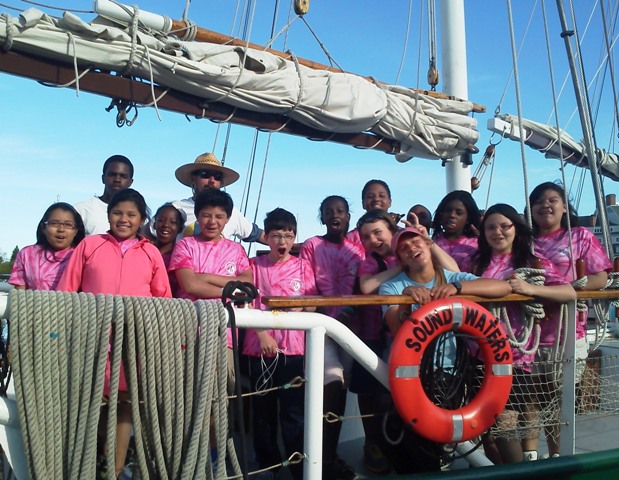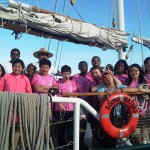January 2014: SoundWaters Invests $279,000 for Scholarship Support in 2013
More than 26,000 students had the opportunity this past year to be outside, to connect to their environment and to experience science as not only approachable, but fun – because of our partners, friends, school districts and parents throughout the Long Island Sound region.
As a significant component of our 2013 programming, SoundWaters invested over a quarter of a million dollars in scholarships, either individually or through schools and community groups, for more than 1/3 of the students who otherwise would have been unable to participate.
Depending on their ages, students could dig through the mud; get their hands wet seining for marine life; examine specimens through a microscope; measure acidic levels in fresh and brackish water; discover differences among marine animals; paddle a canoe; learn to sail a 12-foot Opti; or haul in a trawl net and touch or hold animals while aboard the 80-foot schooner SoundWaters.
“The students learned so much,” said one 8th grade teacher. “Many had a chance to experience something they might never get a chance to do again.”
Environmental literacy programs take place all year long: in classrooms, field sites and the Coastal Education Center from September to June; aboard the Schooner SoundWaters from April through October; and during summer camp and free Saturday programs throughout the summer.
The $279,000 grant and scholarship-funded programs are numerous: For example, 1,200 sixth graders in Stamford were literally knee-deep in scientific exploration during a year-long series of hands-on science lessons, combining classroom instruction with field studies of the Mianus River and Long Island Sound. Girls interested in science deepened their knowledge at a week-long spring Science Stars program. Pre-schoolers from the Child Learning Centers in Stamford met with a SoundWaters educator six times in their classrooms to learn about a featured animal, then visited the SoundWaters Teaching Aquarium to observe the animals together. Students from 70 schools throughout the region sailed on Long Island Sound, many for the first time, to study first-hand the animals, habitats and impact of marine debris on the water.
Perhaps most important, the support helps to level the playing field for all students, both in and out of the classroom, providing outdoor and on-the-water experiences that result in an increased understanding of scientific principles and a greater connection to the natural environment.




